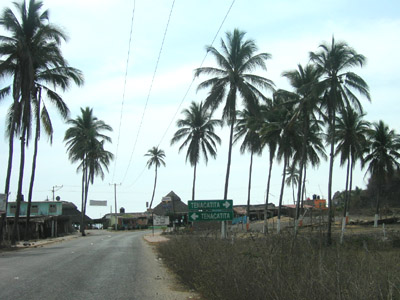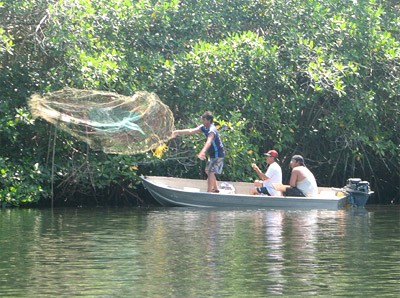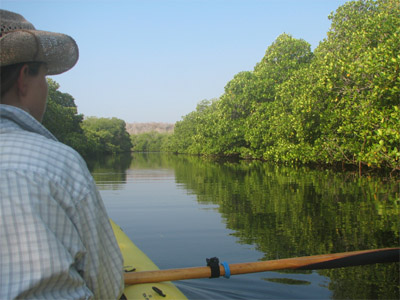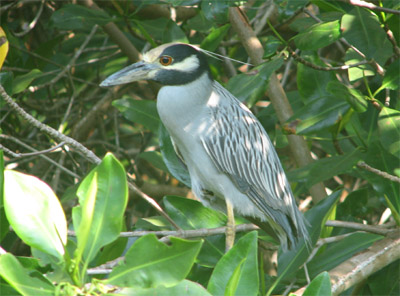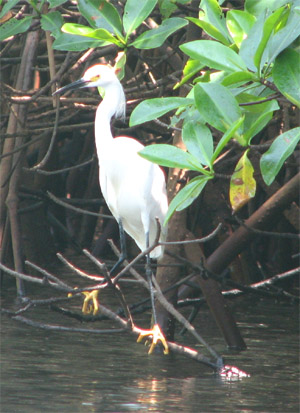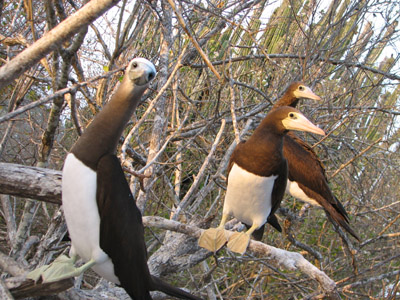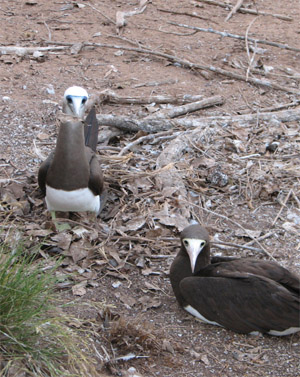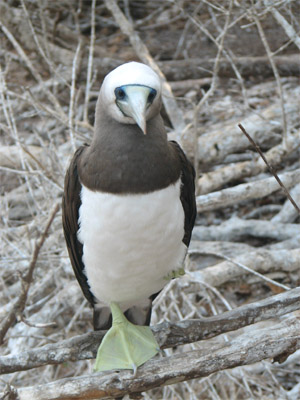Manzanillo
Saturday, March 25th, 2006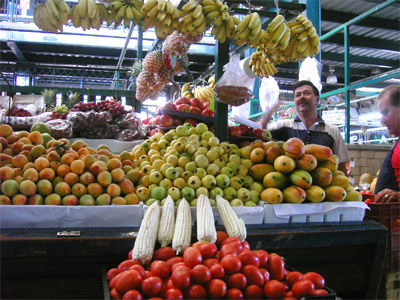
We bypassed the anchorage at the Hotel Las Hadas (where ‘10’ starring Bo Derek was filmed) and headed directly for the port at the center of town. As we were came closer to the breakwater we were still scanning the visible harbor debris for the masts of other sailboats but discovered upon entering that we were it. We anchored at the edge of the panga/fishing boat mooring section, just inside the channel markers. Inside the breakwater is very still but there is a lot of large shipping and tug activity so we get wakes occasionally. Nobody has hassled us, nor has officialdom come out to talk to us so presumably we are in an okay spot. The only people who have talked to us are curious fisherman who want to know where we are from/where we are going; a navy boat just motored by (there is a base here) and we just overheard the comment, “Barco de vela! Tranquila!†So basically, people are pretty damned friendly.
We spent our time mostly stocking up on supplies: veggies, ice, beer, Nutella, and Coconugs. Nutella is something I am indifferent to the states but rises in status to a necessity the moment I set foot out of the country; Coconugs are similar to the candy bar Mounds, minus the corn syrup and another 30 odd ingredients. We tell ourselves that they are good “watch snacks†in an attempt to justify the fact that we are buying a box of candy bars. However, this is a lot of bullshit because we generally eat nearly the entire lot before we even get out to sea. (Nutella, by the way, is good for you; it says so right on the container. “Energia de las avellanas; los elementos nutritivos de la leche; rica en proteinas y sales minerales.â€)
We spent a bit of time at the main mercado, buying vegetables, eating lunch in the upstairs food stall section, and just leaning over the railing on the second story and watching the alimentary action.
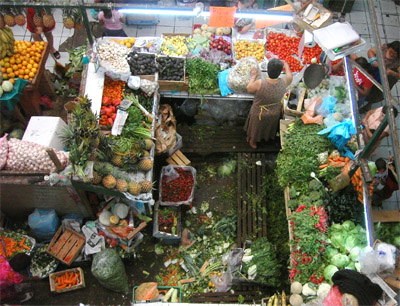
Aerial view of the mayhem.
One of our favorite street snacks here is the tuba drink served into plastic cups out of quaint gourd jugs by very nice guys who, if asked, will not hesitate to describe in detail exactly how tuba is produced, start to finish, with a little history thrown in, while the bees swarm. (Bees really love tuba.) They congregate along Mexico street at intersections mostly and we have seen them mostly in the early day–i.e., they are not night venders. The tuba is served with a couple spoonfuls of peanuts in the top (if you wish) and has a tangy sweet bready and slightly fermented flavor. It reminded us of kvass (from Russia/Ukraine). We tried a couple of different tubas from different venders and they are actually different. Our favorite was less sweet and had a stronger flavor; the tuba guy said that it was ‘tuba natural’ (but they all say that if you ask), however, this time I think he was serious.
Other notable street food mentions go to El Bigotes Taco stand on M. Galindo near Mexico and the churro dude more on corner. He sells the churros by the piece and they are crispy on the outside and creamy on the inside just like they should be.
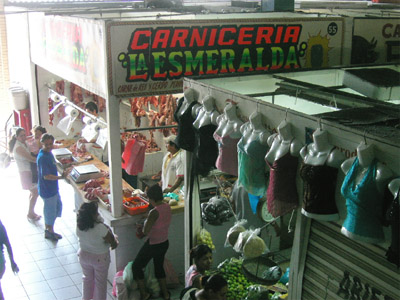
Meat, and lingerie.
